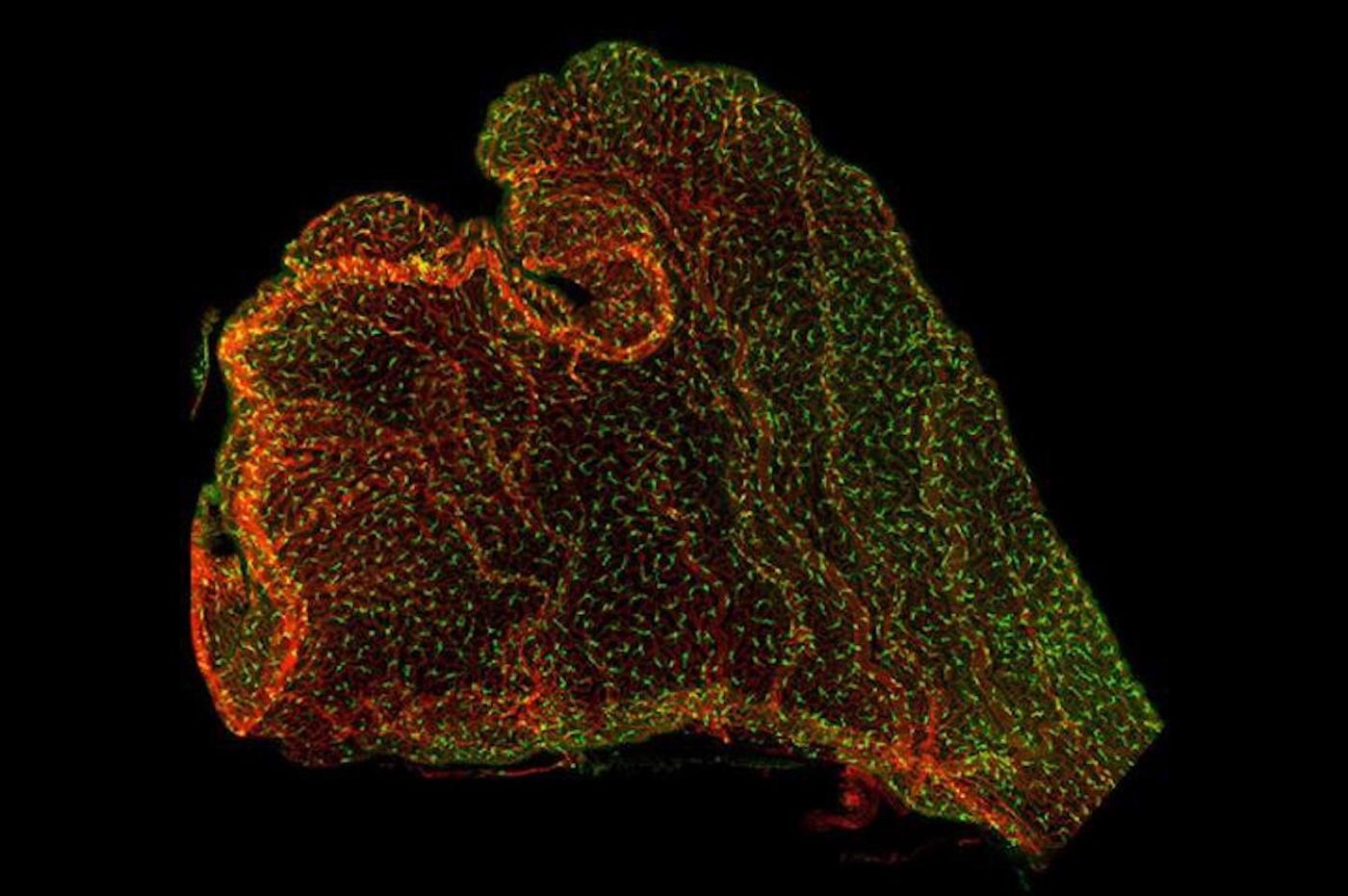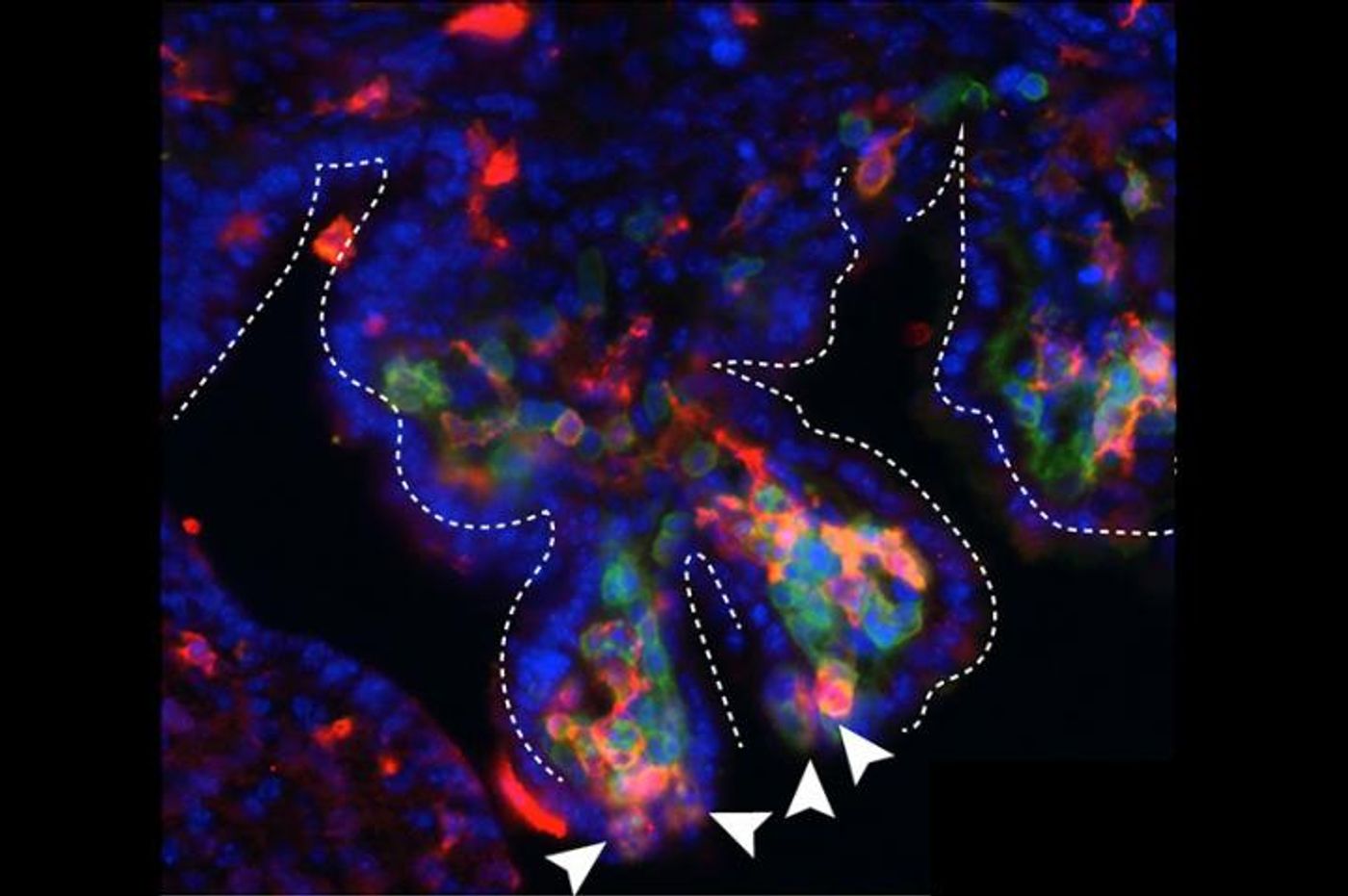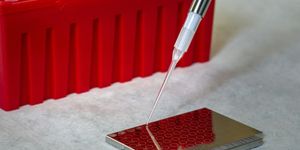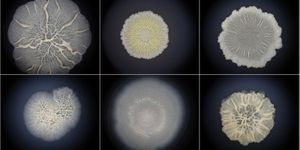A Small Part of the Brain May Transmit Inflammation From Mom to Fetus
There is still a lot we don’t know about the brain, and especially about two small bits of tissue deep within it called the choroid plexus. This structure is very difficult to observe because of its location, but it plays a crucial role in physiology by producing the cerebrospinal fluid (CSF) that holds the brain and spinal cord. New studies reported in Developmental Cell and in Neuron have found that the choroid plexus also has immune system-related functions. This immunological activity may play an important part in protecting the brain. It may also be involved in neurodevelopmental disorders like autism when it goes awry.
"There is a correlation between maternal illness during pregnancy and autism, and we wanted to investigate how this is happening," said the senior author of both reports Maria Lehtinen, Ph.D., a neurobiologist at Boston Children's Hospital. "It's a very challenging process to study in the lab."
The Lehtinen laboratory studies the choroid plexus, and they have shown it to be involved in the regulation of brain development. The choroid plexus sends signals to the CSF, and the blood-brain barrier established by the CSF keeps the brain protected from infection and stress.
The researchers used a mouse model to create a kind of skylight in the brain so they could observe the choroid plexus. They used two-photon imaging to see the choroid plexus in 3D in real-time, and traced the movement of immune cells, changes in calcium levels and secreted molecules.
The team was able to see how changes in maternal inflammation disrupted brain development. During maternal infection or environmental stress, the choroid plexus can be a conduit for inflammation. In one study, the researchers used an inflammatory molecule called a cytokine to mimic maternal inflammation. "We wanted to see how the maternal immune response is propagated into the brain, and how the choroid plexus responds to external insults during early development," explained study author Jin Cui, Ph.D.
The induced inflammation caused immune cells called macrophages to move toward the choroid plexus in the embryo, and start to surveil the choroid plexus.
"The embryonic brain is very small, so it's hard to get good resolution, but we could see macrophages moving and extending little arms as if sampling their environment," noted Lehtinen. "This has never been captured before."
The investigators also saw that inflammatory signals like CCL2 increased in the CSF of the embryo, signals that might have been generated by the choroid plexus.
"Many of these markers, including CCL2, are also upregulated in autism patients," said Cui.
Additional studies showed that CCL2 is all that’s required to recruit activated immune cells to the choroid plexus.
"We have added evidence that the inflammatory response perturbs the development of the brain," says Cui. "Previous studies from others have shown that maternal inflammation causes brain malformations in mouse models very early in life, and similar malformations can be seen in some autism patients."
More work will be needed before we know whether autism and the choroid plexus are directly linked, but the researchers did see patches of disorganization in the mouse brains.
"The goal would be to see if preventing the breaching of the choroid plexus barrier could slow or prevent the progression of disease in the brain," said Lehtinen. "That will involve collaborating with many different groups in multiple fields, as well as further advances in imaging technology that are currently underway."
Sources: AAAS/Eurekalert! Via Boston Children’s Hospital, Neuron, Developmental Cell










